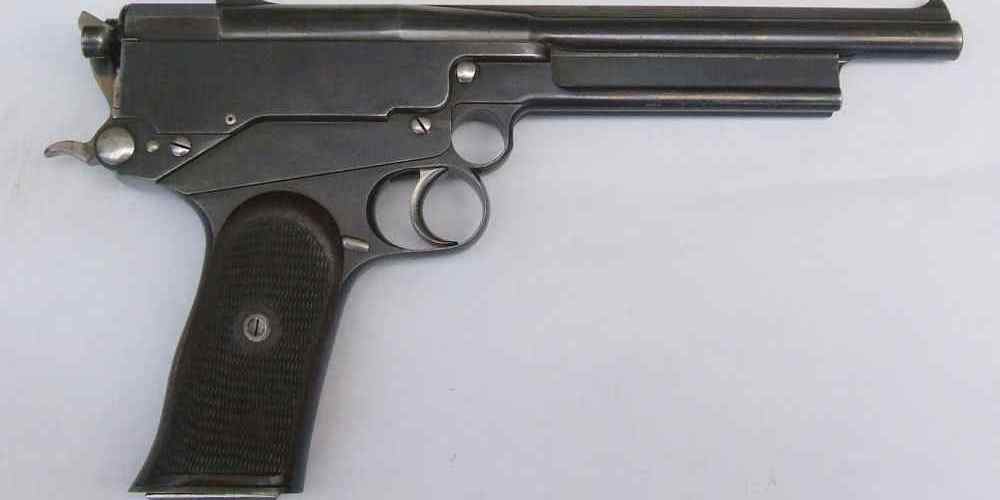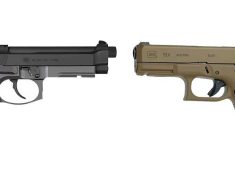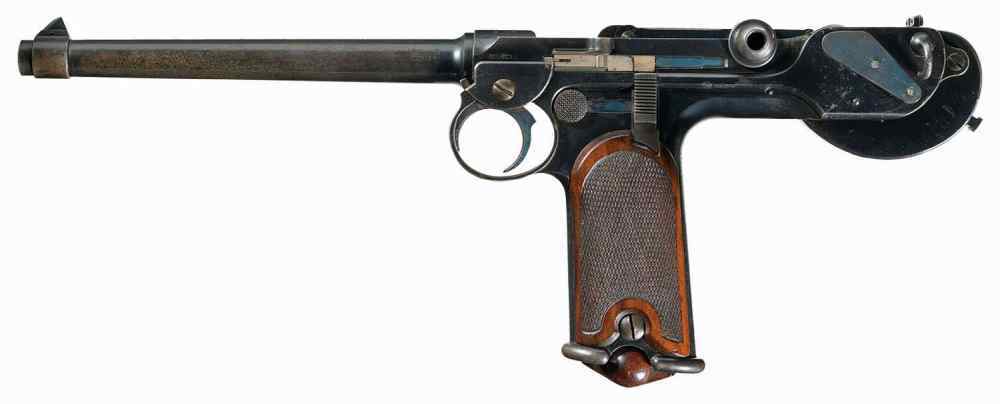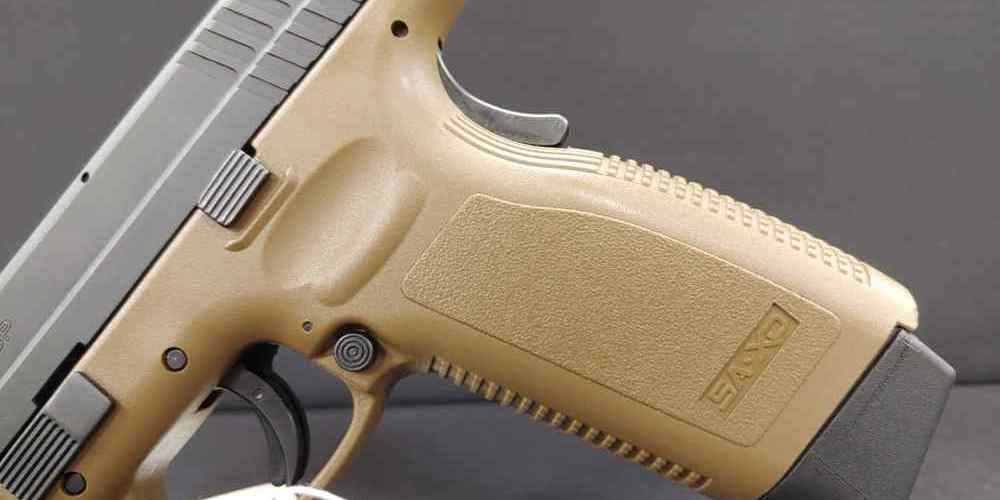Unlock the power of precision with The Physics of Firing: Understanding Semi-Auto Pistol Dynamics.
Recoil Management Techniques for Improved Accuracy
When it comes to shooting a semi-automatic pistol, understanding the physics behind firing can greatly improve your accuracy. Recoil management is a crucial aspect of shooting that can make a significant difference in your performance. By mastering recoil management techniques, you can minimize the impact of recoil on your shooting and achieve better accuracy.
One of the key factors in recoil management is understanding how the pistol functions. When you pull the trigger on a semi-automatic pistol, the firing pin strikes the primer of the cartridge, igniting the gunpowder and propelling the bullet down the barrel. As the bullet travels down the barrel, it creates a force that pushes the gun in the opposite direction, causing recoil.
To effectively manage recoil, it is important to have a firm grip on the pistol. A proper grip helps to control the movement of the gun during firing, reducing the impact of recoil on your accuracy. Make sure to position your dominant hand high on the grip, with your fingers wrapped around the front of the grip and your thumb resting on the frame. Your support hand should then be placed underneath the trigger guard, providing additional support and stability.
In addition to a firm grip, proper stance is also essential for recoil management. A stable shooting platform helps to absorb the energy of recoil and minimize its impact on your shooting. Stand with your feet shoulder-width apart, knees slightly bent, and body weight evenly distributed. Lean slightly forward into the gun, with your arms extended and elbows slightly bent. This stance helps to absorb the energy of recoil and maintain control over the pistol.
Another important aspect of recoil management is trigger control. Proper trigger control helps to ensure that the gun fires smoothly and consistently, reducing the impact of recoil on your accuracy. When pulling the trigger, use the pad of your index finger and apply steady pressure until the gun fires. Avoid jerking the trigger or flinching, as this can disrupt your aim and affect your accuracy.
Breathing control is also crucial for recoil management. Proper breathing technique helps to maintain focus and stability while shooting, reducing the impact of recoil on your accuracy. Take a deep breath, exhale halfway, and hold your breath while firing. This helps to stabilize your body and maintain control over the pistol, improving your accuracy.
Practice is key to mastering recoil management techniques. Regular practice helps to build muscle memory and improve your shooting skills, allowing you to effectively manage recoil and achieve better accuracy. Start by dry firing to practice your grip, stance, trigger control, and breathing technique. Once you feel comfortable, move on to live fire practice to refine your skills and improve your accuracy.
In conclusion, understanding the physics of firing and mastering recoil management techniques are essential for improving your accuracy with a semi-automatic pistol. By having a firm grip, proper stance, good trigger control, and breathing technique, you can effectively manage recoil and achieve better accuracy. With regular practice and dedication, you can become a more skilled and accurate shooter.

The Science Behind Bullet Trajectory and Impact
When it comes to understanding the dynamics of firing a semi-automatic pistol, there are a number of key physics principles at play. From the moment the trigger is pulled to the impact of the bullet on its target, a complex interplay of forces and energies is at work. In this article, we will delve into the science behind bullet trajectory and impact, shedding light on the fascinating physics of firing a semi-auto pistol.
One of the most important factors in determining the trajectory of a bullet is the muzzle velocity. This is the speed at which the bullet leaves the barrel of the gun and is influenced by a number of factors, including the type of ammunition used, the length of the barrel, and the amount of gunpowder in the cartridge. The higher the muzzle velocity, the faster the bullet will travel and the flatter its trajectory will be.
As the bullet travels through the air, it is subject to a number of forces that can affect its trajectory. One of the most significant of these forces is air resistance, which slows the bullet down as it moves through the atmosphere. The shape of the bullet, as well as its velocity, can influence the amount of air resistance it experiences. Additionally, factors such as wind speed and direction can also have a significant impact on the bullet’s trajectory.
Another important factor in determining the trajectory of a bullet is gravity. As soon as the bullet leaves the barrel of the gun, it begins to fall towards the ground due to the force of gravity. The angle at which the gun is held, as well as the height of the target, can influence how much the bullet will drop before reaching its destination. By understanding the effects of gravity on bullet trajectory, shooters can adjust their aim to compensate for this downward pull.
When a bullet strikes its target, it transfers its kinetic energy to the object, causing damage. The amount of damage inflicted by a bullet is determined by a number of factors, including its velocity, mass, and the type of target it hits. Bullets with higher velocities and larger masses will typically cause more damage than those with lower velocities and smaller masses. Additionally, the type of target – whether it is soft tissue, bone, or metal – will also influence the extent of the damage.
In conclusion, the physics of firing a semi-automatic pistol are complex and fascinating. From the moment the trigger is pulled to the impact of the bullet on its target, a number of forces and energies are at work. By understanding the principles of bullet trajectory and impact, shooters can improve their accuracy and effectiveness. So next time you pick up a semi-auto pistol, remember the science behind firing – it may just help you hit your target with precision and skill.
Understanding the Role of Barrel Length in Firing Dynamics
When it comes to understanding the dynamics of firing a semi-automatic pistol, there are many factors at play. One of the key components that can greatly impact the performance of a pistol is the barrel length. In this article, we will delve into the role of barrel length in firing dynamics and how it can affect the overall performance of a semi-auto pistol.
Barrel length plays a crucial role in the firing dynamics of a pistol. The length of the barrel can impact the velocity of the bullet as it travels down the barrel and exits the muzzle. A longer barrel typically allows for a longer period of time for the expanding gases from the ignited gunpowder to accelerate the bullet, resulting in higher muzzle velocity. This can lead to increased accuracy and range for the pistol.
On the other hand, a shorter barrel may result in lower muzzle velocity due to the shorter distance for the gases to accelerate the bullet. This can impact the accuracy and range of the pistol, as the bullet may not travel as far or as fast as it would with a longer barrel. However, a shorter barrel can also offer benefits such as increased maneuverability and ease of concealment, making it a popular choice for concealed carry pistols.
It is important to note that the relationship between barrel length and firing dynamics is not linear. While a longer barrel may generally result in higher muzzle velocity, there are other factors at play that can influence the performance of a pistol. Factors such as the type of ammunition used, the design of the pistol, and the shooter’s skill level can all impact the overall performance of a pistol.
In addition to muzzle velocity, barrel length can also impact the recoil of a pistol. A longer barrel typically results in less felt recoil, as the additional length can help to dissipate the energy generated by the firing of the pistol. This can make shooting a pistol with a longer barrel more comfortable and easier to control, especially for shooters with less experience.
Conversely, a shorter barrel may result in more felt recoil, as there is less material to absorb and dissipate the energy generated by the firing of the pistol. This can make shooting a pistol with a shorter barrel more challenging, especially for shooters who are not accustomed to managing recoil. However, some shooters may prefer the increased recoil of a shorter barrel for its perceived benefits in terms of speed and agility.
In conclusion, barrel length plays a significant role in the firing dynamics of a semi-automatic pistol. The length of the barrel can impact factors such as muzzle velocity, accuracy, range, and recoil, all of which can influence the overall performance of a pistol. When choosing a pistol, it is important to consider the impact of barrel length on firing dynamics and select a pistol that best suits your needs and preferences.
Exploring the Physics of Trigger Pull and Reset
When it comes to understanding the dynamics of firing a semi-automatic pistol, it’s essential to delve into the physics behind trigger pull and reset. These two aspects play a crucial role in how a shooter interacts with their firearm and ultimately affects their accuracy and speed.
Trigger pull refers to the force required to pull the trigger and discharge a round. This force is typically measured in pounds and can vary depending on the make and model of the pistol. A lighter trigger pull requires less force to fire, making it easier for the shooter to maintain accuracy and control. On the other hand, a heavier trigger pull may require more effort but can also provide added safety by reducing the likelihood of accidental discharges.
The physics behind trigger pull involve a complex interplay of mechanical components within the pistol. When the trigger is pulled, it engages a series of mechanisms that ultimately release the firing pin, striking the primer and igniting the gunpowder in the cartridge. The force required to overcome these mechanisms is what determines the trigger pull weight.
Understanding trigger reset is equally important in mastering the dynamics of firing a semi-automatic pistol. Trigger reset refers to the distance the trigger must travel forward after firing before it can be pulled again to discharge another round. A shorter reset distance allows for faster follow-up shots, as the shooter can quickly re-engage the trigger without having to fully release it.
The physics of trigger reset involve the same mechanical components as trigger pull, but in reverse. As the trigger is released after firing, it resets the firing pin and other components back to their original positions, readying the pistol for the next shot. The distance the trigger must travel during this process is what determines the reset distance.
Transitional phrases such as “on the other hand” and “in reverse” can help guide the reader through the complex interactions of trigger pull and reset. By understanding these physics, shooters can better control their pistols and improve their accuracy and speed on the range.
In practical terms, mastering trigger pull and reset requires practice and familiarity with the specific characteristics of a particular pistol. Shooters must develop muscle memory to consistently apply the right amount of force to the trigger and quickly reset it for follow-up shots. This process can be challenging but is essential for becoming a proficient marksman.
By studying the physics of firing a semi-automatic pistol, shooters can gain a deeper appreciation for the intricacies of their firearms. Trigger pull and reset are not just mechanical functions but are integral to the overall shooting experience. With practice and understanding, shooters can harness these dynamics to improve their skills and enjoy the sport of shooting to its fullest.
How Different Ammunition Types Affect Firing Performance
When it comes to firing a semi-automatic pistol, understanding how different ammunition types can affect firing performance is crucial. The physics behind firing a pistol are complex, and the type of ammunition used can have a significant impact on accuracy, recoil, and overall shooting experience.
One of the key factors to consider when choosing ammunition for your semi-auto pistol is the bullet weight. Heavier bullets typically have more recoil, which can affect your ability to accurately shoot multiple rounds in quick succession. Lighter bullets, on the other hand, may have less recoil but may not penetrate as deeply as heavier bullets. Finding the right balance between bullet weight and recoil is essential for achieving optimal firing performance.
Another important consideration is the bullet velocity. Higher velocity bullets tend to have flatter trajectories and may be more accurate at longer distances. However, higher velocity bullets also tend to have more recoil, which can impact your ability to quickly and accurately fire multiple rounds. Lower velocity bullets may have less recoil but may not be as accurate at longer distances. Finding the right balance between bullet velocity and accuracy is key to maximizing your firing performance.
Bullet design is also a critical factor to consider when choosing ammunition for your semi-auto pistol. Hollow point bullets are designed to expand upon impact, creating a larger wound channel and increasing stopping power. Full metal jacket bullets, on the other hand, are designed to penetrate deeply without expanding, making them ideal for target shooting or training purposes. Understanding the differences between bullet designs and how they can impact firing performance is essential for selecting the right ammunition for your needs.
In addition to bullet weight, velocity, and design, the type of powder used in the ammunition can also affect firing performance. Different powders burn at different rates, which can impact the velocity and recoil of the bullet. Understanding how different powders behave in your semi-auto pistol can help you fine-tune your shooting experience and achieve optimal performance.
Transitioning between different types of ammunition can also affect firing performance. For example, switching from a lighter bullet to a heavier bullet may require adjustments to your shooting technique to compensate for the increased recoil. Similarly, switching from a lower velocity bullet to a higher velocity bullet may require adjustments to your aim to account for the flatter trajectory. Understanding how different types of ammunition interact with your pistol and how they can affect your shooting performance is essential for becoming a proficient shooter.
In conclusion, understanding how different ammunition types can affect firing performance is essential for achieving optimal results with your semi-auto pistol. By considering factors such as bullet weight, velocity, design, and powder type, you can fine-tune your shooting experience and maximize your accuracy, recoil control, and overall shooting performance. Experimenting with different types of ammunition and understanding how they interact with your pistol can help you become a more skilled and proficient shooter.






